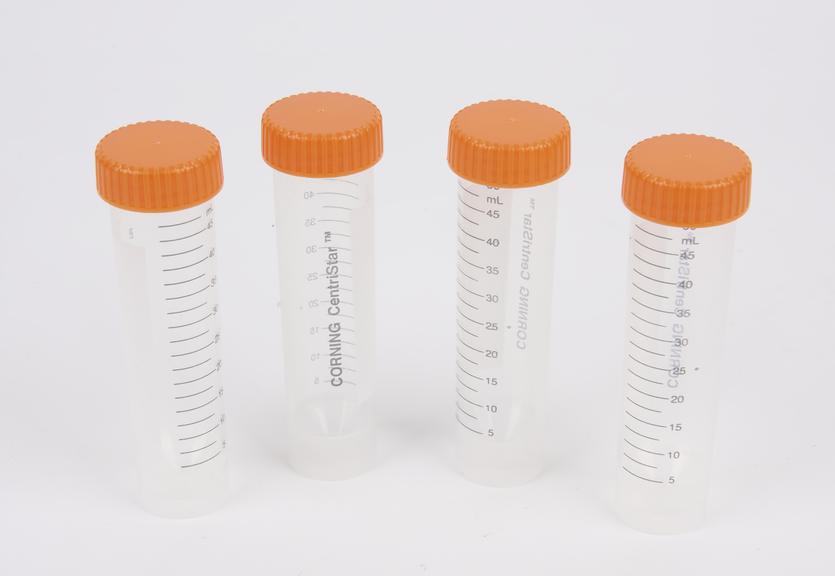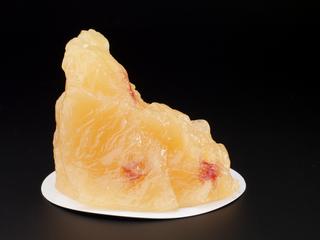
Four 'falcon' tubes, secondary containers for blood sample tubes
- Made:
- circa 2014-15 in unknown place
- maker:
- Corning Incorporated

Four plastic Corning® CentriStar™ 'falcon' tubes, used as a sececondary container for blood sample tubes, for use by laboratory workers in the 'diagnostic tent' at the Manteneh Ebola Treatment Centre during the Ebola outbreak in Sierra Leone, 2014-2015
Diagnosing Ebola just from a person's symptoms is difficult as many other conditions, including pregnancy, are similar. Symptoms include fever, muscle weakness, headache, vomiting, and diarrhoea. Confirmation of Ebola is through laboratory and blood tests. As the virus is spread through contact with the body, blood, body fluids of someone with Ebola or the equipment used to treat and diagnose them, extreme caution is needed to prevent its spread, including placing samples in two containers. Anyone with symptoms is quickly quarantined, until tests can be carried out.
Set up by the International Medical Corps the Manteneh Ebola Treatment Centre in Makeni included frontline interactions with suspected or confirmed cases, the daily diagnostic procedures as samples were tested through to the administrative elements of certification and the role of health awareness materials.
The West African epidemic of Ebola that began in 2014 was the most widespread outbreak of the virus disease in history—causing major loss of life and disruption to society and the economy, mainly in the countries of Guinea, Liberia, and Sierra Leone. It became international news and prompted an international medical response. In June 2016 when Guinea was the last country to be declared free of Ebola, there were more than 28,000 cases and more than 11,000 deaths. Since 2021, a vaccine has been available to protect high-risk populations and frontline workers.
Details
- Category:
- Public Health & Hygiene
- Object Number:
- 2020-78
- Materials:
- plastic (polypropylene)
- type:
- plastic tubes




